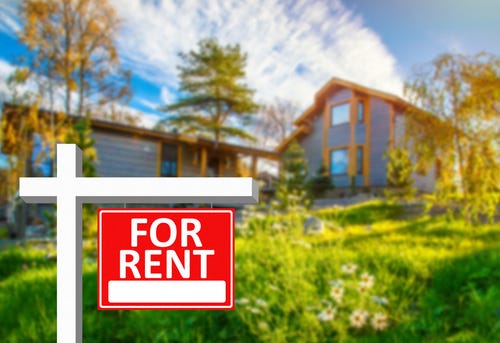Why Six-Figure Earners Still Rent a Home Instead of Buying
Investors will continue to rotate their attention among metro areas as specific locales gain or lose popularity
NOTE TO READERS: The following is one of dozens of economic articles found in this week’s issue of The Trends Journal. Consider subscribing here for in-depth, independent geopolitical and socioeconomic trends and trend forecasts that you won’t find anywhere else.
Increasingly, Americans earning $100,000 or more annually are continuing to rent their homes instead of buying.
Forty-four million households are renters, more than a third of the country’s 123.6 million, even though the U.S. median income in 2022 was a record $78,813, according to the data website Seeking Alpha.
In Austin, Tex., which saw a flood of new residents during the COVID War, the number of renters making $150,000 a year or more shot up 154 percent, The Wall Street Journal reported.
There are two chief reasons why well-off earners continue renting.
First, the housing market is unsettled, with prices only slowly falling from last summer’s record high, and rising interest rates already have jacked typical monthly mortgage payments by hundreds of dollars a month, as we reported in “Average Mortgage Interest Rate Tops 7 Percent” (7 Mar 2023).
During February this year, the average rate rose a full point. That boosted the monthly payment by $230 in the last four weeks for someone buying a $400,000 home and putting 20 percent down on a 30-year, fixed-rate loan, according to the National Association of Realtors.
Compared to a year ago, when mortgage rates averaged around 4 percent, the monthly payment on that house is 50 percent higher now, CNBC reported.
Also, the costs of owning a home—painting routinely, cleaning the furnace, fixing leaky plumbing—have risen along with prices in general.
Jessica Bronner, a 30-year-old business owner in Richmond, Va., can afford to buy but “the market is still very inflated and it doesn’t make sense to buy,” she told the WSJ.
Second, homes for sale remain scarce and prices remain high, in significant part because private equity firms and other investors invaded the U.S. housing market during the COVID War.
They bought tens of thousands of suburban houses as rental properties during the COVID War, marketed them to households with above-average incomes, and charged premium rents.
As a result, developers looking to maximize profit and minimize effort have been building homes and even entire housing tracts as rental properties that investors sometimes have bought before the houses are even built.
That not only reduced the number of houses on the market, but also has made it harder for even well-off households to save enough for the usual 20-percent cash down payment on a home.
We have documented this groundshift in the American housing market in a series of articles, including:
● “Real Estate Investors Choosing Single-Family Rental Homes” (13 Oct 2020)
● “Invitation Homes to Buy $1 Billion Worth of Houses This Year” (1 Jun 2021)
● “Rents for Single-Family Homes Reach 15-Year High” (1 Jun 2021)
● “Blackstone Extends Reach Into Housing Market” (29 Jun 2021)
● “Private Equity Partners Target $5 Billion in Rental Houses” (27 Jul 2021)
● “Residential Rental Rates Skyrocketing” (10 Aug 2021)
● “Investors Now Targeting Off-Campus Student Housing” (14 Sep 2021)
● “Rents Soaring. What’s Next?” (21 Sep 2021)
● “Single-Family Rental Homes: Investments Galore” (16 Nov 2021)
● “Rents on the Rise” (11 Jan 2022)
New apartment complexes have sprung up, but builders are focusing on luxury developments packed with fitness rooms and other amenities that draw high earners able to pay hefty rents. (See “Apartment Rents Rising, Bigs Buying Them Up,” 16 Nov 2021).
For houses as well as apartments, “higher rents are here to stay,” Mark Wolf, CEO of build-to-rent home construction company AVH Communities, said to the WSJ.
At one of his company’s housing tracts near Seattle, the average household income among renters is more than $200,000, he said.
PUBLISHER’S NOTE: Wolf’s comment bears out our long-standing prediction that Bigs’ home invasion strategy is creating a generation of renters.
TREND FORECAST: As we wrote in “Homebuilders Sell Discounted Subdivisions to Private Equity Investors” (13 Dec 2022), private equity firms and other institutional investors are now a permanent major presence in the U.S. housing industry.
Investors will continue to rotate their attention among metro areas as specific locales gain or lose popularity, adjusting rental rates to maximize profits but not pushing them to the point at which significant numbers of tenants move in with roommates or family members.
This new force in U.S. housing will continue to shut out hundreds of thousands of families that could have claimed a portion of the American dream and built equity by owning homes of their own. With the highest mortgage interest rates in decades, combined with already steep home prices and median household income about a fifth of the current average selling price of a house, most Americans will continue to be locked out of the housing market.
TRENDPOST: Also illustrating the decline in living standards and unaffordability of people to buy homes, in the United States that was at one time called the Land of Opportunity, according to Pew Research Center, 52 percent of 18 to 29-year-olds live with their parents. Back in the 1960s, just 29 percent were living with parents and the latest figure is even worse than it was back in the Great Depression and World War II.



